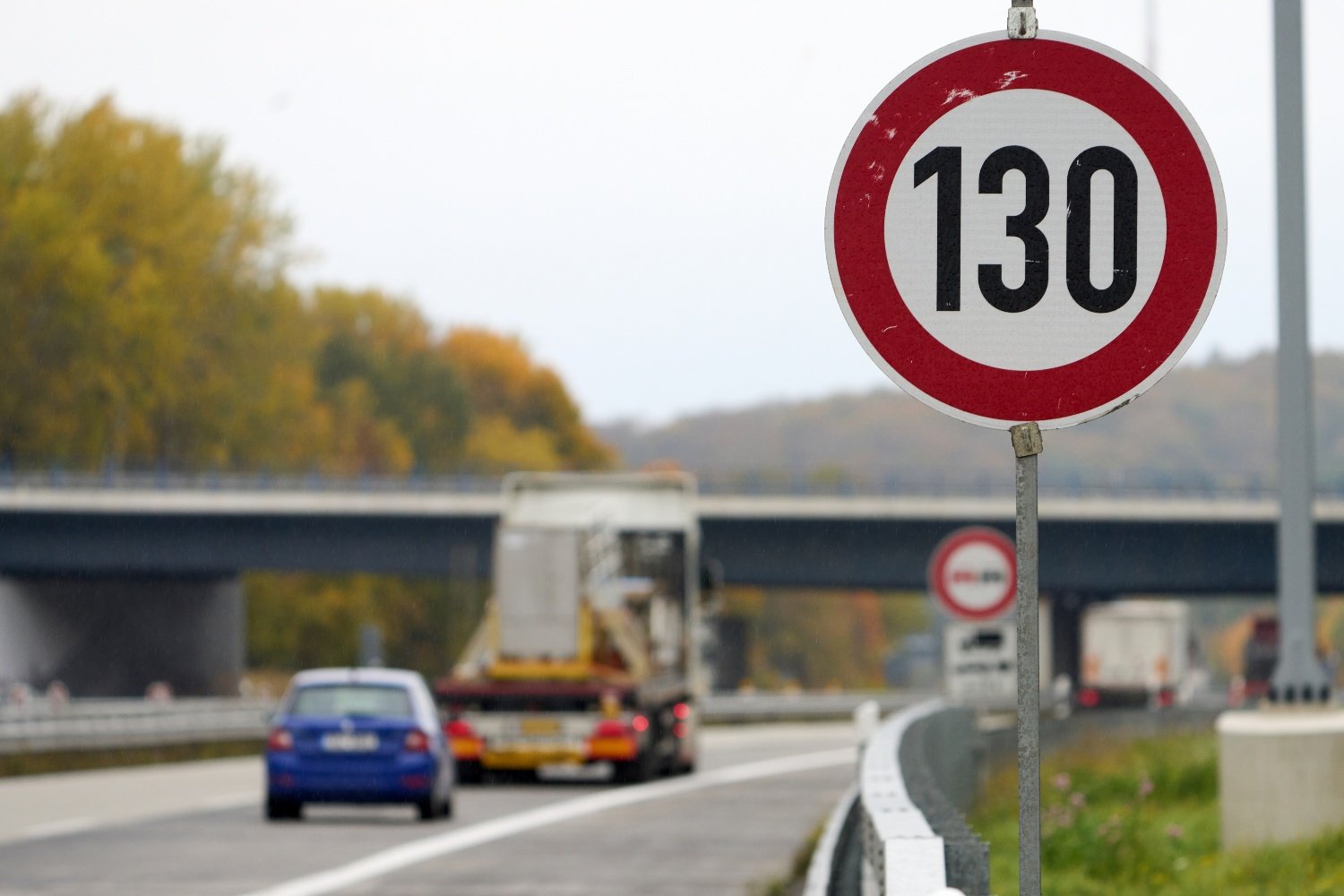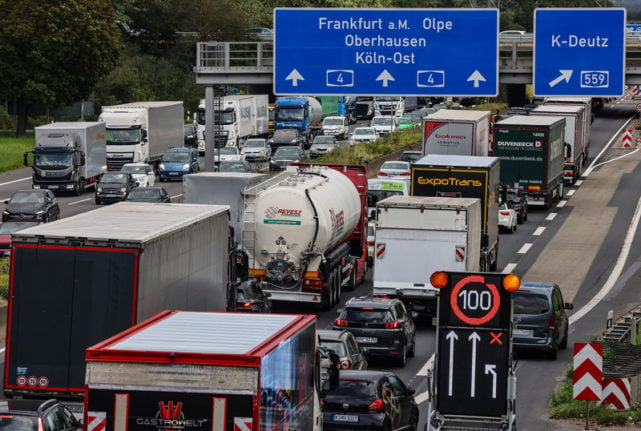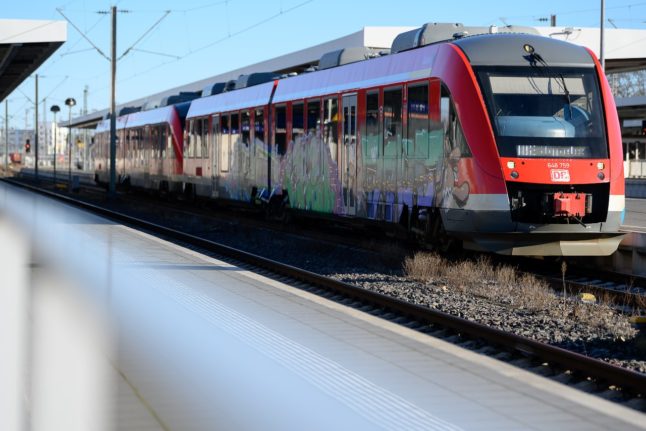Herbstferien (autumn holidays) started on Monday – or are continuing – for the German states of Bremen, Hamburg, Lower Saxony, Rhineland-Palatinate, Saxony-Anhalt and Schleswig-Holstein.
On Friday they’ll begin in the states of Hesse, Berlin, Brandenburg and Saarland.
That means that motorists can a lot of traffic this week and especially upcoming weekend, when the holidays – which see the closure of schools in Germany – are either starting or ending.
The ADAC, Germany’s largest driving association, broke down where drivers can reckon with the biggest traffic jams, delays and road closures over the holidays.
What should drivers be the most aware of?
A lot of the traffic will be coming and going to the south and the middle of the Netherlands, where the holidays are ending this weekend, said ADAC.
Drivers should also brace themselves for heavy traffic on the way to or from the hiking regions of the Alps and low mountain ranges as well as the North Sea and Baltic Sea.
The danger of traffic jams is greatest around road works and during rush hour.
In accordance with the weather, which has taken a frosty turn around Germany, drivers should plan for weather-related obstructions on the entire road network. Fog, in particular, can considerably reduce visibility.
READ ALSO: Germany hit by floods as October heat turns into icy spells
Trips to higher altitudes in the Alps should no longer be undertaken without winter tyres.
But even at lower altitudes, winter storms are no longer a rarity at this time of year.
The following routes are set to be the most affected (in both directions):
- Highways to and from the North and Baltic Sea
- All areas in and around Hamburg, Berlin und München
- A1 Lübeck – Hamburg – Bremen – Dortmund
- A3 Würzburg – Nuremburg – Passau
- A4 Erfurt – Dresden – Görlitz
- A5 Hattenbacher Dreieck (Triangle) – Karlsruhe – Basel
- A7 Hamburg – Flensburg
- A7 Hanover – Würzburg – Ulm – Füssen/Reutte
- A8 Stuttgart – Munich – Salzburg
- A9 Berlin – Nuremberg – Munich
- A10 Berliner Ring
- A24 Hamburg – Berlin
- A61 Ludwigshafen – Koblenz – Mönchengladbach
- A93 Inntaldreieck – Kufstein
- A95/B2 Munich – Garmisch-Partenkirchen
- A99 Munich bypass
There are currently about 1,350 motorway construction sites in Germany. It can sometimes take longer there, especially with heavy traffic. Some roadworks also require full closures.
Short-term motorway closures:
A23 Hamburg towards Heide between Tornesch and Elmshorn from Friday, October 20th at 8:30 pm until Monday, October 23rd at 5 am.
A43 Recklinghausen towards Wuppertal between Sprockhövel and Kreuz Wuppertal-Nord on Sunday, October 22nd, from 6 to 10 am.
A44 Düsseldorf direction Mönchengladbach between Krefeld-Fichtenhain and Mönchengladbach-Ost from Friday, October 20th at 8 pm to Monday, October 23rd at 5 am.
A46 Wuppertal towards Düsseldorf between the end of the A46 extension and the Wuppertal-Nord junction on Sunday, October 22nd, from 6 am to 10 am.
A46 Düsseldorf direction Wuppertal between Wuppertal-Oberbarmen and Kreuz Wuppertal-Nord on Sunday, October 22nd, from 6 am to 10 am.

A73 Bamberg direction Nuremberg between Hirschaid and Forchheim-Nord from 6 pm on Saturday, October 21st, to 12 am on Sunday, October 22nd
A555 Bonn direction Cologne between Wesseling and Rodenkirchen from Friday, October 20th at 9 pm to Monday, October 23rd at 5 am
A560 Sankt Augustin direction Hennef between Dreieck Sankt Augustin-West and Sankt Augustin from Wednesday October 18th at 8 pm to Saturday, October 21st at 5 am, daily between 8 pm and 5 am
Congestion forecast for Brenner, Tauern, Gotthard
Traffic in neighbouring countries will also come to a standstill at times, especially the routes to mountain destinations.
There is also a high probability of traffic congestion on the Austrian Westautobahn as well as on the Tauern, Fernpass, Brenner, Rhine Valley and Gotthard routes. Travel traffic will be slowed down around numerous construction sites.
On the Austrian Tauern motorway between Golling and Pfarrwerfen, the Ofenau and Hiefler tunnels and the Werfen tunnel chain are being renovated. Tunnels will be closed alternately in each direction.
The traffic will be routed in one lane in the free tubes in two-way traffic. Drivers will have to allow for significantly longer journey times. There is also a high risk of traffic jams on the entire Austrian Brenner motorway due to several road works including lane closures.
Due to the closure of the Gotthard railway tunnel, the volume of traffic on the car route through the Gotthard tunnel could increase and cause additional traffic jams
Waiting times possible at the border
Due to increased border checks, there could be waiting times at the border.
The three motorway border crossings Suben (A3 Linz – Passau), Walserberg (A8 Salzburg – Munich) and Kiefersfelden (A93 Kufstein – Rosenheim) are particularly affected.




 Please whitelist us to continue reading.
Please whitelist us to continue reading.
Member comments